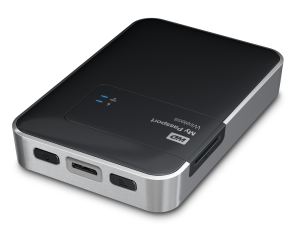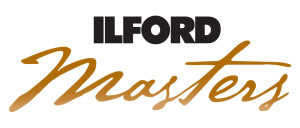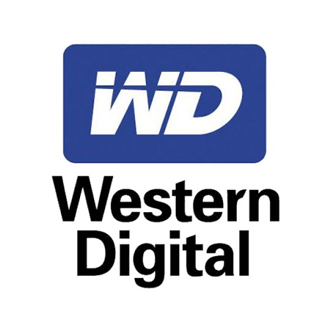
A new hard drive from WD just arrived – the new My Passport Wireless. I have the 1TB version and what struck me when I took it out of the box was its light weight. I expect any portable single disk HD will weigh much the same but nevertheless, I immediately noticed how modest in size it was – the specs say it weights only 270g.
You can use this HD in various ways:
– As a portable card archive – insert an SD card and the images are immediately sucked off into a dedicated SD card folder on the hard drive. In the field this could be a great way to back up files when you don’t have a laptop handy. I suspect that you’d have to be careful with this drive on location – it’s not ruggedised and actively spinning HDs do not take kindly to being moved or jolted when operating.
I see this feature as being handy to back up files from cards, but not to allow re-use of the cards. There is no direct image verification* so you’d be running blind, trusting that the images were all correctly copied across. Given that the unit is battery powered, this could be a device to take on a multi-day trip when you know you’ll not have a laptop with you.
Copying times are a little on the slow side – using a high end SD card it took slightly over 6 mins to copy 3.3GB of data (108 DNG) files from the card to the Passport. That’s a little under 10MB/s with some of that time being some sort of start up routine since the actual copying light did not start to flash for about 30 secs after I inserted the card. It’s a tolerable performance but a long way short of the 100MB/s I get when using the SD slot in a MacBook Pro with an internal SSD drive. Performance – modest, convenience – excellent.
– As a local wireless hard drive – not much different to connecting by USB cable although this allows access to a sophisticated dashboard and configuration back end where you can set security options etc. I clocked the data rate at about 9MB/s which is adequate but obviously not up to USB speeds.
– As a NAS – connect the Passport to your own local network and it acts as a Network Attached Storage device, accessible from any computer on the same network. This could be very useful for me personally when I conduct workshops – the Passport can act as a shared drive for guests to access workshop sample files, download Tutorial PDFs and videos and upload their own images for sharing amongst the group.
– As a media server able to stream images, music and movies to certain home devices such as XBox, DLNA2 devices and so on.
– As a normal external hard drive connected by USB. This offers the best transfer speeds – I measured it at just under 100MB/s – but this is no different to any other bus-powered portable HD.
How will I use it? I expect it will replace one of my existing travel hard drives from now on, one being my 4TB Passport Pro and the other, previously, being a 1TB WD Firewire drive which I used to connect through the Thunderbolt adapter. With only two USB sockets in MBPs these days, *not* having to use them up to plug in external drives is a bonus. The 4TB Passport Pro connects through Thunderbolt and the new Passport Wireless does not need a socket.
The Pro will be my main high performance drive and the Wireless will act as the second backup drive since my MBP has limited internal storage. In addition, it will get used as a data hub for workshops so I can share files without having to pass around a datastick.
More details here: WD Passport Wireless
*UPDATE: On further investigation, you can verify images which were downloaded directly off SD cards by using a free iOS or Android device called My Cloud which allows your mobile device to directly access the Passport. This allows you to browse the files on the HD and even open them if necessary. The only slight drawback is that it will not preview raw files, only Jpegs but you can at least confirm that the files are there. If you were to shoot raw+Jpeg you would be able to see the Jpeg files as a kind of raw proxy – maybe shoot small Jpegs so as not to take up too much card space. Using the Passport and a smartphone would be a lot lighter than taking a laptop if you were limited by an airline baggage allowance for example.






